The Secrets Behind Turkish Baklava
Baklava is one of the most famous desserts in the world, and Turkey is often considered its true home. With its flaky layers of phyllo pastry, rich nuts, and sweet syrup, baklava is more than just a dessert—it is a symbol of Turkish culture, tradition, and hospitality. While many countries have their own version, Turkish baklava has a unique charm that sets it apart. But what makes it so special? Let’s uncover the secrets behind this legendary sweet.
1. The History of Baklava
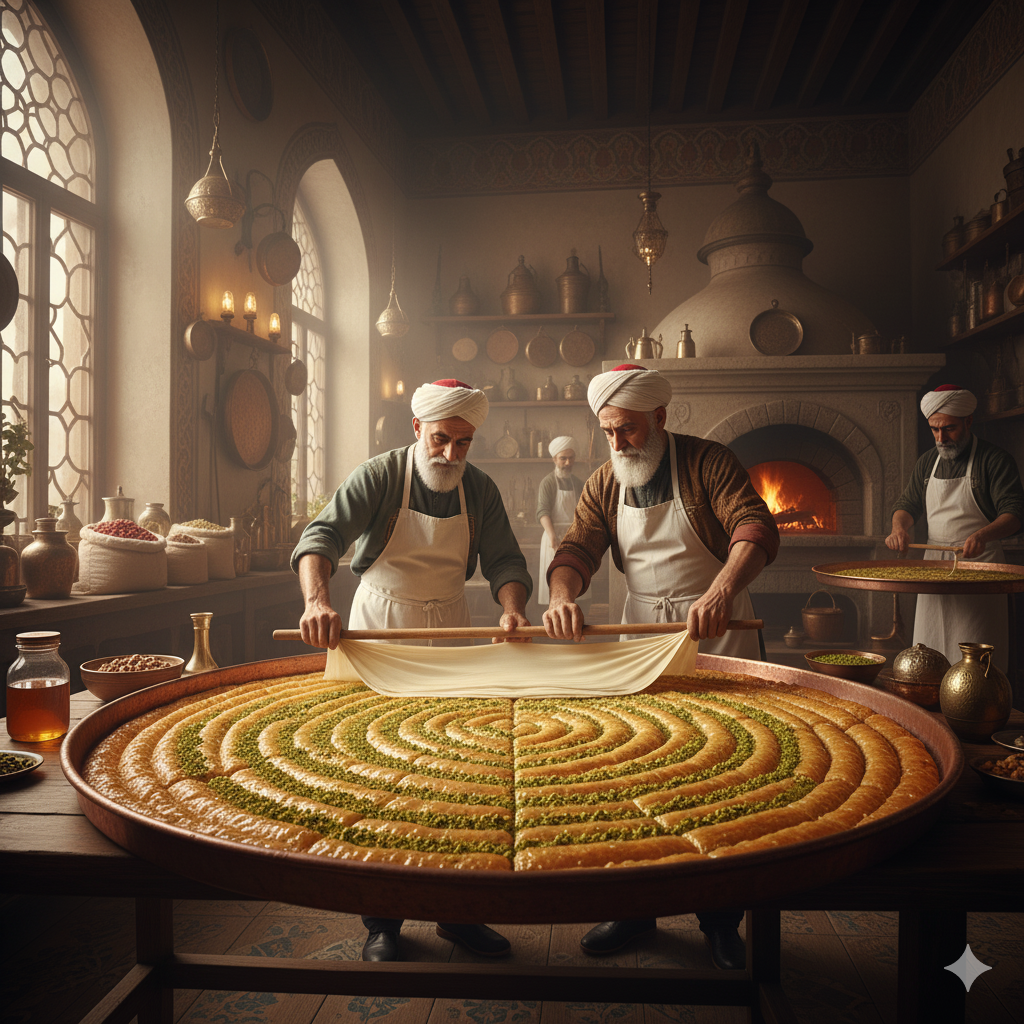
Baklava’s roots go back centuries, with influences from the Middle East and Central Asia, but it was perfected in the kitchens of the Ottoman Empire. The royal chefs in Istanbul refined the recipe into the luxurious, multi-layered pastry we know today. Baklava was even considered a royal treat and often served during special celebrations, feasts, and religious festivals.
2. The Art of Perfect Layers
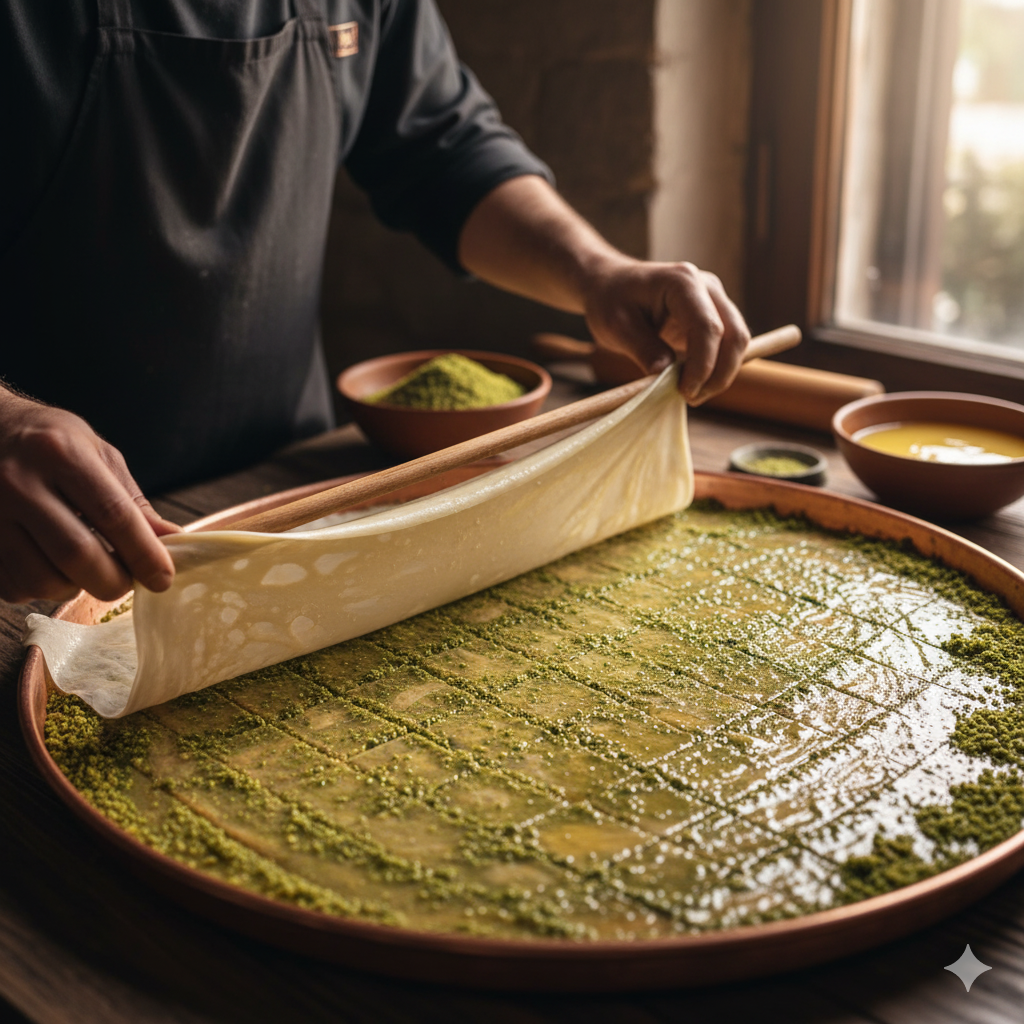
One of the biggest secrets behind Turkish baklava is the thinness of the dough. Skilled chefs roll phyllo sheets so thin that they are almost transparent. Traditional baklava can have 30 to 40 layers of dough, giving it a crisp yet delicate texture. This requires patience, precision, and years of practice, which is why handmade baklava tastes so much better than mass-produced versions.
3. The Choice of Nuts
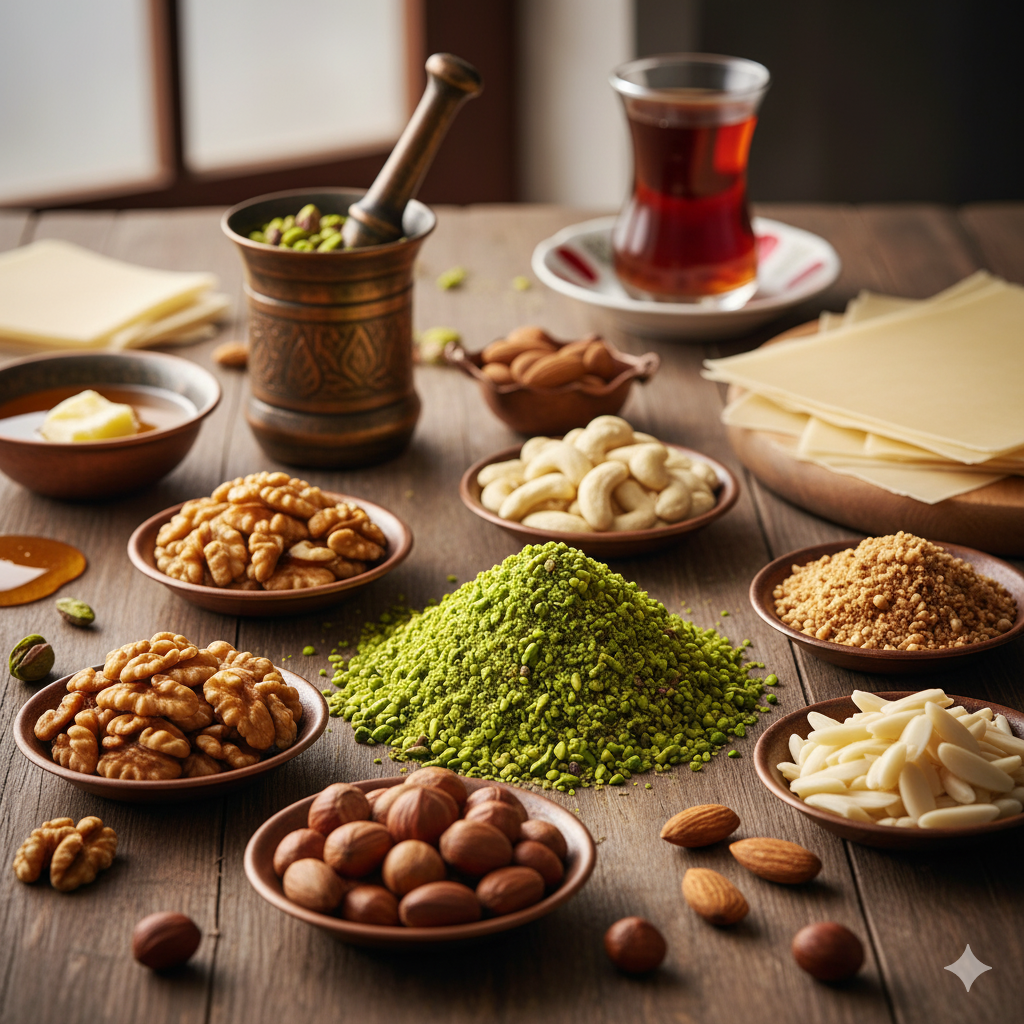
Another secret lies in the nuts used for the filling. The most famous Turkish baklava comes from Gaziantep, a city known for its high-quality pistachios. These bright green nuts give baklava its signature flavor and aroma. In other regions, walnuts, almonds, or hazelnuts are also used, but pistachio baklava remains the king of all varieties.
4. The Sweet Syrup
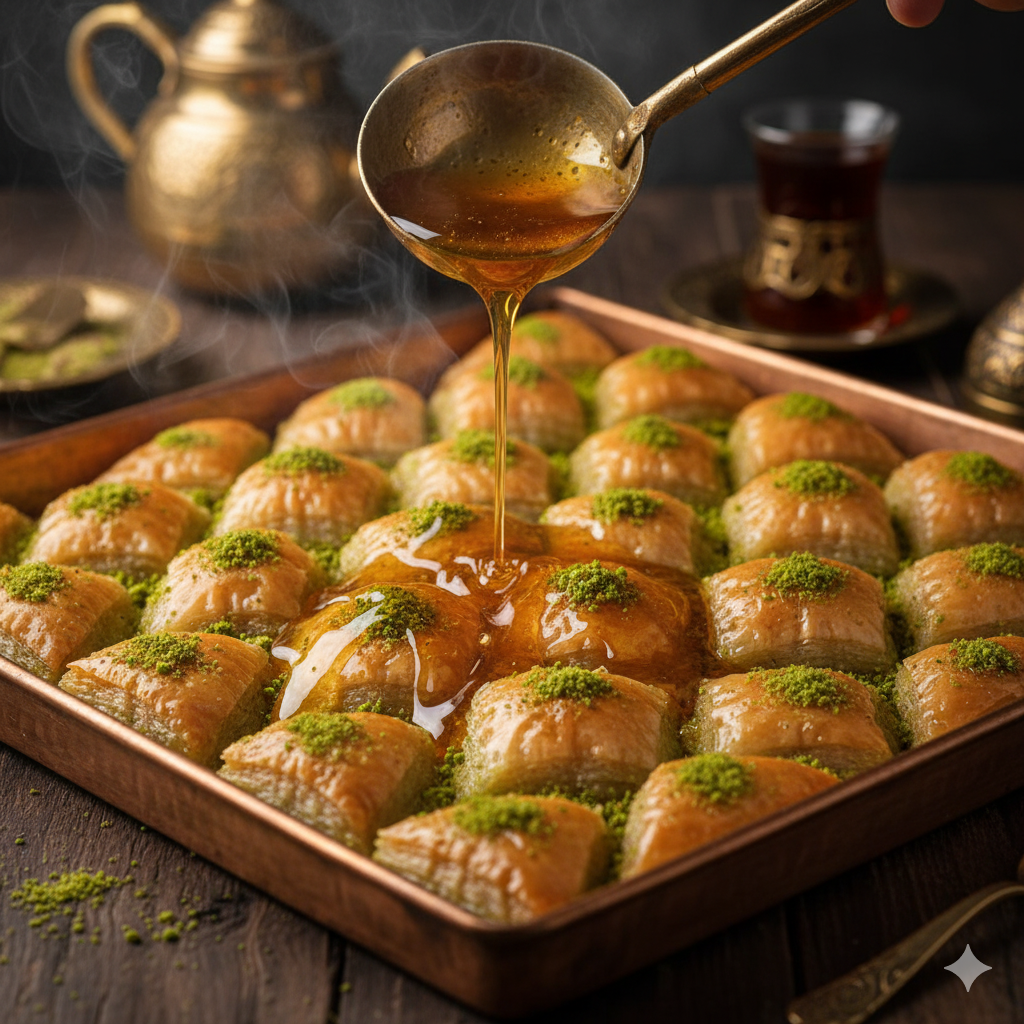
Instead of heavy honey, Turkish baklava is usually sweetened with a light sugar syrup made with sugar, water, and lemon juice. This syrup is poured over the baked pastry so that it soaks in slowly, keeping the layers crispy while giving just the right amount of sweetness. The secret is balance—good baklava should never feel overly sticky or soggy.
5. The Serving Tradition
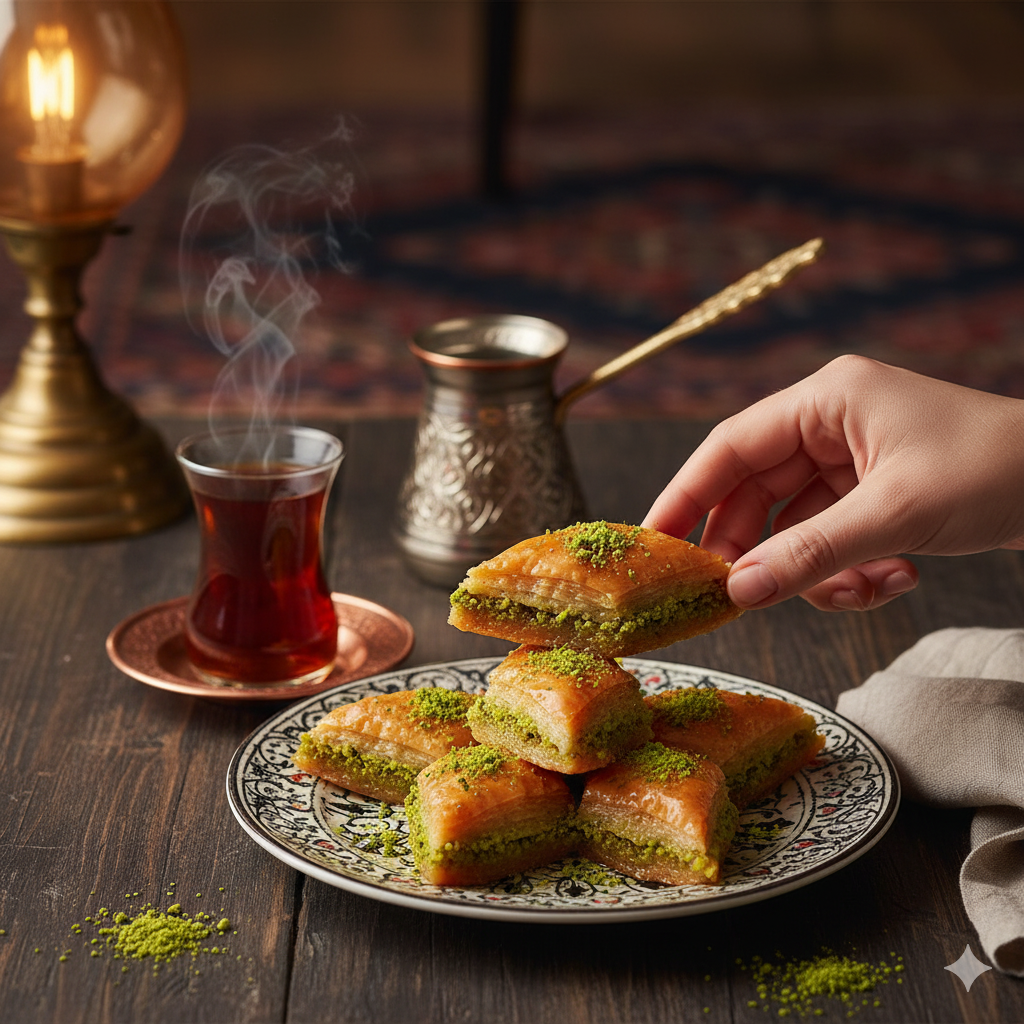
Baklava in Turkey is not just a dessert; it’s part of the culture of hospitality. It is often served during weddings, festivals like Eid (Bayram), or when welcoming guests. In fact, offering baklava is seen as a gesture of respect and kindness. It is usually enjoyed with a cup of strong Turkish tea or coffee, which balances the sweetness perfectly.
6. Modern Twists
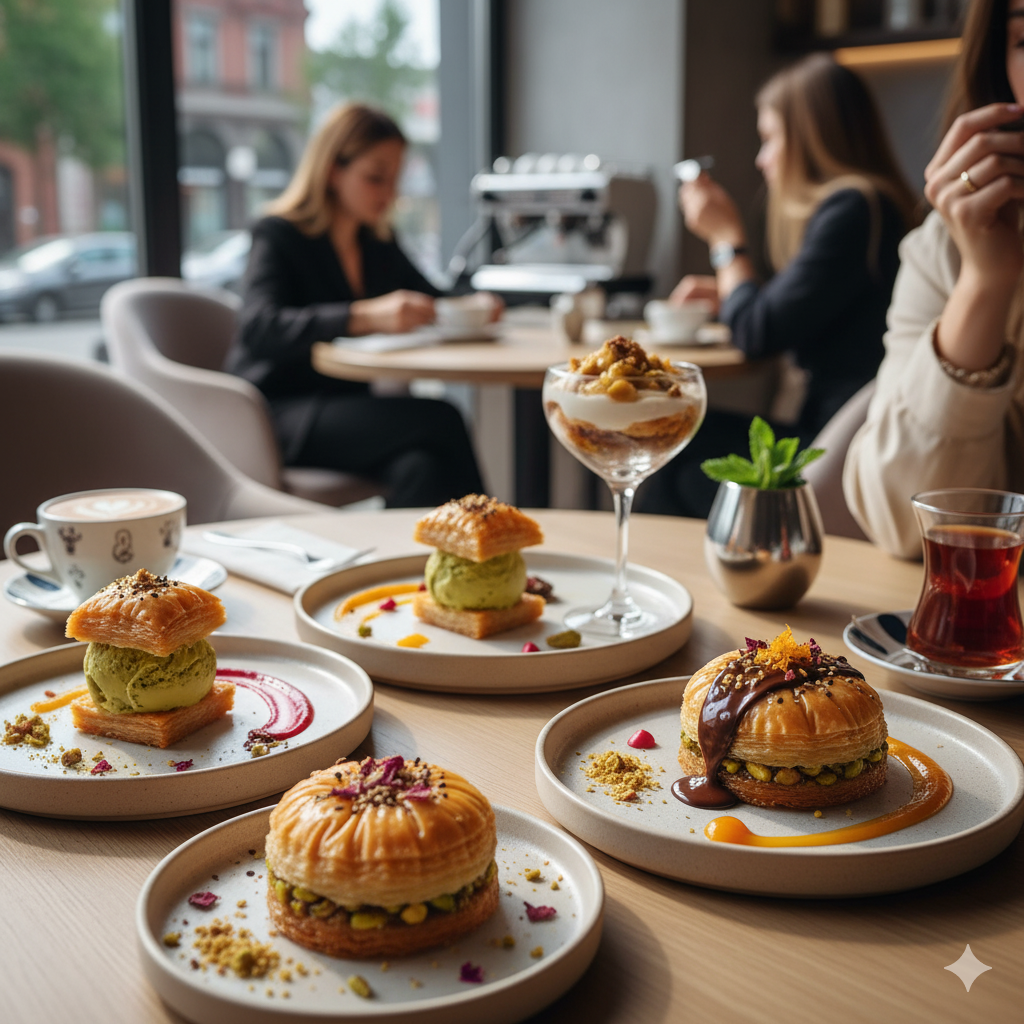
While traditional baklava remains the most popular, modern chefs are experimenting with new flavors—adding chocolate, cream, or different nut combinations. However, the authentic taste of pistachio baklava with light syrup remains unmatched and continues to be Turkey’s most iconic dessert.
Conclusion
The secrets behind Turkish baklava lie in its history, craftsmanship, and cultural significance. From the paper-thin layers of pastry to the finest pistachios of Gaziantep and the perfectly balanced syrup, every detail is carefully crafted to create harmony in taste and texture. More than a dessert, baklava represents Turkish hospitality, celebration, and tradition—making it a timeless sweet loved across the world.

